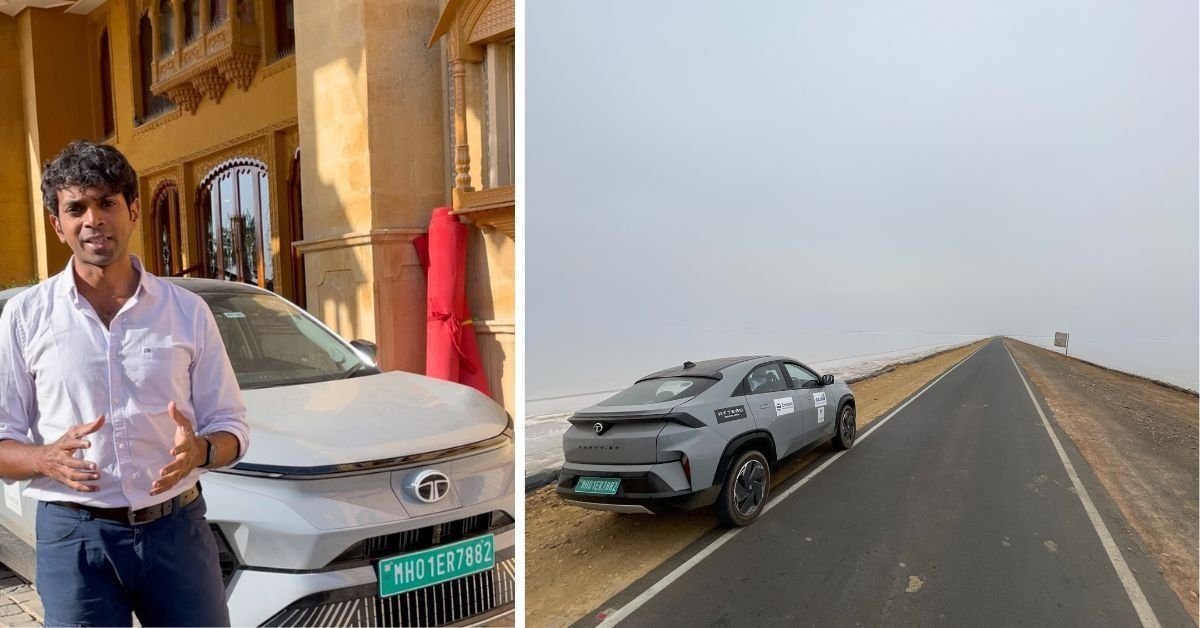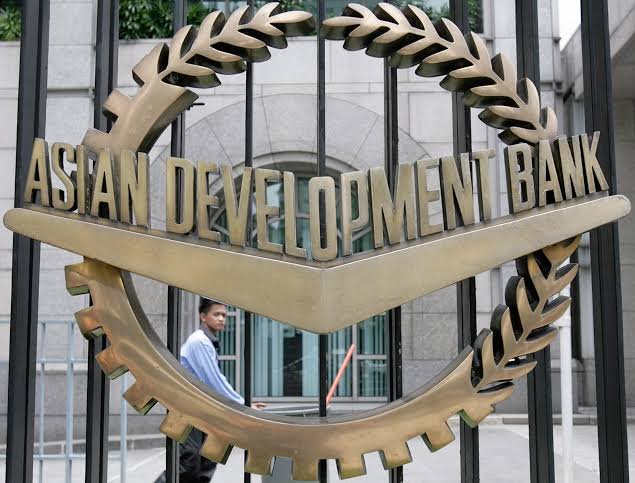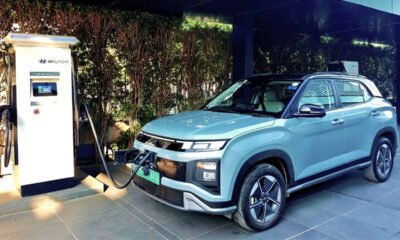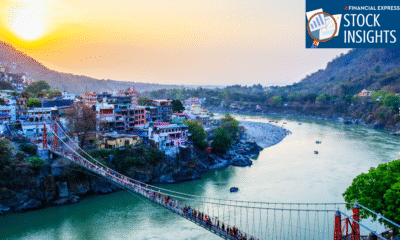Travel Guides & Articles
How To Deal With Range Anxiety, Finding EV Charging Points

A decade ago, when Sushil Reddy embarked on his first trip by EV (electric vehicle), his mind was a maze of questions. Today, he recalls that trip as one that set the precedent for his travel choices.
We catch up with the Mumbai-based 36-year-old, who is currently recovering from the exhilaration of having been featured in the India Book of Records for the ‘maximum distance covered in an electric car by an individual’.
The record celebrates his feat of having completed a round-trip journey starting from Mumbai on 10 February 2025, traversing 28 cities across eight states in his Tata Curvv.ev and returning to Mumbai on 14 April 2025. The journey lasted 10,027 km. Sushil also used the time dutifully to channel passion into purpose. Over the course of the two months, he made a stop at 25 universities where he conducted awareness sessions around electric mobility.
Aside from spinning a route of sustainability across 25 Indian cities — including Surat, Dwarka, Udaipur, Delhi, Bhopal, Indore — on that trip, he credits the trip for layering his understanding of EVs.
What sets EVs apart
Recalling his first EV expedition, Sushil says, “There are still so many question marks around how an electric vehicle performs; even I had them.” But time-tested drives replaced the scepticism with knowledge. Today, Sushil is a seasoned expert. But he shies away from being called that, reasoning that his success with EV trips owes a great deal to the performance metrics of these electric fleets.
He explains, “A vehicle with a petrol or diesel engine has a lot of moving parts, allowing for more wear and tear. In EVs, the moving parts are fewer, and so the maintenance is lower.”
With regards to efficiency, too, Sushil says, EVs are a win. “ICE (internal combustion engine) vehicles have an efficiency of 20-30 percent — for every 100 units of fuel that you load the tank with, only 20 or 30 units are actually being used to push the car forward — while in EVs this efficiency is around 60-90 percent.”
As the Indian automotive sector is seeing a collective push to recognise EVs, Sushil is positive that the acceptance is only going to surge in the coming years.
Pedalling a sustainable story across 7000+ kms
In 2016, Sushil and his solar-powered cycle made headlines as he rode through nine states in the span of 79 days, covering 7,424 km. This broke the Guinness World Record for the longest journey on a solar-powered electric bicycle.
As more and more consumers hurry to invest in EVs — especially with the government proposing a complete transition from internal combustion engine (ICE) vehicles to EVs by 2030 — what was once a fledgling field is now starting to amass a huge clientele in the Indian market. As a report by the Economic Times points out, 2024 saw the sale of around two million EVs in India, reflecting rising consumer interest.
But the report goes on to state that cost is a pain point. “Whether an electric vehicle will cost you less or more ultimately depends on how you use it,” the report explains.
Sushil agrees. “India is a cost-conscious market. If you look at the decision to buy an EV, it would primarily be based on the cost of the vehicle. An EV does cost more, and this is because of the batteries. Even while battery costs have reduced in the last five years, the price parity is yet to be achieved.”
That being said, Sushil coaxes people towards EV adoption by reasoning, “The upfront cost is higher, but the cost of running the vehicle is much lower than an ICE vehicle. The per-kilometre cost of running a petrol or diesel vehicle is around Rs 10. An EV would be Rs 3. So, the more you run an EV vehicle, the more you’re receiving in payback compared with the amount that you have invested.”
An antidote to range anxiety
In 2022, people across India had become adept at identifying the MG ZS EV, an electric SUV, as it revved its engine of sustainability across 35 cities and 13 states, through the historic Golden Quadrilateral route (a network of national highways connecting major Indian cities Delhi-Kolkata-Chennai-Mumbai), covering a distance of 8,849 km in 70 days. Driving it was Sushil.
Talking about how he countered range anxiety during the trip, he says, “Interestingly, we charged the MG ZS EV only 12 times at DC fast-charging stations along this route, costing us Rs 2,851. The rest of the time, we charged the car overnight using a portable AC charging cable that could be plugged into any 16 Amp socket (a three-pin heavy-duty socket which is usually used to run loads like air conditioners, geysers, water coolers, etc).”
The entire journey was planned according to the “worst-case scenario” when it comes to charging. That being said, Sushil advises an extension cord to access the 16 Amp plug point, which may not be available at a short distance near the parking area of the electric car, especially for riders embarking on long journeys.
But the biggest boon he shares was ‘Plugshare’, which provides a complete map of electric vehicle charging stations worldwide. “Every EV company has its own app. Even if you want to go to a particular charging station to charge your vehicle, you can; you’ll find its charge zone. Everything is digital, even at these charging stations. On the app itself, you can load money into the wallet depending on how many units of electricity you want in the car.”
Planning for an EV trip
However, in a detailed blog where Sushil recounts every step of the journey, he does highlight one key challenge in travelling long distances on EVs.
“Network establishment at EV charging stations and managing multiple apps and digital wallets of EV charging station companies could be a challenge. But there are solutions today to eliminate this challenge, like the QR code scanning ‘Charge-Thru’ process by ‘Fortum Charge & Drive’ and ‘YoCharge’,” he notes.
Other ways of countering range anxiety, he says, are to lower your speed. “Lower speeds will generally deliver a higher range due to lesser air drag and rolling resistance. Regeneration plays a key role in city driving due to frequent braking. Instant acceleration is very useful for overtaking on highways. We even touched speeds up to 150 kmph, but it’s not recommended since the range could drastically reduce.”
But all things said, planning has helped Sushil navigate the perils of range anxiety. “If you look at the battery life, you can assess how many km the EV will be able to run for on a single charge. Let’s say it’s a four-wheeler, and you charge the battery from 0 to 100 percent, this can run for around 400 km. Of course, it depends on different battery capacities.”
If you’re doing an intercity trip, he recommends planning the journey such that every two hours you can make a stop at a charging facility and align this with your restroom and meal breaks. “With one hour of charge time, around 200 km of range can easily be added to the battery.”
As Sushil is prepping for his next EV trip, he is sure this list will be compounded with more learnings. And by then, maybe you’ll be planning your EV trip too!
Edited by Khushi Arora; All images courtesy Sushil Reddy
Sources
‘Buying an electric car? Before spending big bucks, factor these hard facts’: by Yasmin Hussain, Published on 29 April 2025.
‘Maximum Distance Covered in an Electric Car by an Individual’: by India Book of Records, Published on 28 May 2025.
Travel Guides & Articles
India expands fast track immigration program to 13 airports, streamlining travel for citizens and OCI holders | India News

Launching the ‘fast track immigration – trusted traveller program’ (FTI-TTP) — which enables faster immigration of pre-verified flyers through automated e-gates — at five more international airports in the country, home minister Amit Shah on Thursday suggested that its coverage be maximised by enabling resident Indians and overseas citizens of India (OCI) to sign up for FTI-TTP at the state of issuing of passports or OCI cards itself.With the inclusion of Lucknow, Amritsar, Thiruvananthapuram, Tiruchirappalli and Kozhikode international airports, the total number of airports covered under the program has risen to 13. First launched at the Indira Gandhi International Airport here in June 2022, the program had added seven more airports — covering Mumbai, Chennai, Kolkata, Bengaluru, Hyderabad, Kochi and Ahmedabad — in January this year. Shah said the facility will be available at the upcoming Navi Mumbai and Jewar airports as well. Addressing the FTI-TTP inauguration event at five airports through video-conference, Shah said around 3 lakh persons had registered under the program and over 2.6 lakh travellers, both inbound and outbound, had availed of it, enabling them to clear immigration in as little as 30 seconds and with no long queues or manual checks. “The next phase of the effort to enhance passenger convenience by integrating Prime Minister Shri Narendra Modi Ji’s vision of ‘speed, scale, and scope’ into the FTI-TTP is starting from today,” he said, adding that the program introduces foreign travellers to the positive changes taking place in India. Drawing attention to the 60% increase in international passenger traffic over the past 11 years of Modi govt — from a little over 5 crore in 2014 to 8.1 crore in 2024 — Shah said the figure of 2.6 lakh who have availed of the FTI-TTP facility is too small, leaving tremendous scope to maximise its coverage. Stating that everyone who has availed of the program has voiced appreciation, the home minister said “our goal should be to ensure that every Indian citizen and every OCI cardholder takes advantage of this facility”.“To achieve this, I request that when issuing passports and OCI cards, we can also conduct this registration (under FTI-TTP), so that people don’t have to come twice for fingerprinting or document verification. Whenever they travel, they can simply use their passport. I think we must further explore the technological possibilities to maximize the number of people who can take advantage of this program,” he added.
Travel Guides & Articles
Pickyourtrail expands omnichannel presence across India with 3 stores

Pickyourtrail has announced the launch of three new offline stores across Chennai, Kochi, and Vapi this month. This expansion marks another milestone in the brand’s omnichannel journey, seamlessly blending digital convenience with the trust of in-person consultations. With these additions, Pickyourtrail moves closer to its vision of opening 50+ stores across India in the next 12–18 months, making personalised international holidays more accessible to travellers nationwide.
A recent BCG report highlights India as one of the fastest-growing global travel markets, with domestic leisure travel expected to grow at 12% annually until 2040, and international travel at 10%. This surge is driven by Millennials and Gen Z, who are prioritising discovery, personalisation, and hybrid planning journeys that combine AI tools with human expertise. Reflecting this trend, Pickyourtrail has recorded a 23% rise in hybrid bookings, with such customers spending 12% more on trips, opting for longer stays, and showing stronger repeat and referral behaviour.
Anchored in its proprietary AI-driven platform, the brand’s omnichannel strategy has already reduced decision fatigue by 20% for travellers. Its growing network of offline stores is designed to complement this digital backbone, providing reassurance through physical touchpoints. The company’s stores have seen a 3–4% lift in conversions in the past six months, reinforcing the need for high-trust, human-led experiences in international travel planning.
“With every new store, we see not just more walk-ins and conversions, but also a stronger sense of confidence among customers,” said Hari Ganapathy, CEO & Co-founder of Pickyourtrail. “International holidays are big decisions for families, and our stores help bridge the gap between aspiration and action by offering personal assurance alongside digital convenience.”
He added, “India is at a turning point in the way it travels. Younger explorers want flexibility, not friction, and our omnichannel approach is designed around that insight. Whether customers start online and finish in-store, or vice versa, our goal is to provide the same level of care and clarity at every stage.”
As India’s travel landscape grows more aspirational and experience-driven, Pickyourtrail continues to double down on its mission of making world-class, customised holidays accessible to more Indians. Several new store launches are already planned for the coming quarter, reinforcing the brand’s commitment to shaping the future of travel through a perfect balance of technology and human touch.
Travel Guides & Articles
ADB partners with India for USD 126.42mn loan to boost Uttarakhand tourism

The Asian Development Bank (ADB) and the union government have signed a loan agreement worth USD 126.42 million to promote sustainable and climate-resilient tourism in Uttarakhand. The initiative, announced by the finance ministry, aims to transform Tehri Lake into a key hub while positioning the state as a diversified, all-weather tourism destination. Officials highlighted that this project aligns with Uttarakhand’s broader strategy of driving rural growth through sustainable tourism models.
The project focuses on Tehri Garhwal, one of Uttarakhand’s most climate-vulnerable regions. It is expected to benefit more than 87,000 residents and 2.7 million annual visitors by improving infrastructure, planning, and essential services. The plan emphasises better sanitation, waste management systems, and disaster preparedness to ensure safety and sustainability for both locals and travellers.
According to Juhi Mukherjee, joint secretary in the Department of Economic Affairs, the ADB loan directly supports the government’s tourism policy for Uttarakhand. She stressed that Tehri Lake has been identified as a priority zone for development, providing the state with opportunities to diversify income streams while preserving ecological balance.
ADB’s India Resident Mission officer-in-charge, Kai Wei Yeo, said the project is a model for integrating rural development with tourism. He explained that adopting a multisector approach would generate jobs, build climate resilience, and support Uttarakhand’s long-term economic growth. This reflects ADB’s larger vision of combining infrastructure investment with community-focused outcomes.
Key interventions under the project include climate-resilient infrastructure, nature-based solutions to address landslide and flood risks, and enhanced institutional capacity. The initiative also focuses on inclusive tourism, with a strong role for women, youth, and the private sector. These interventions are designed to create a more equitable and participatory tourism ecosystem in the region.
Notable features of the programme include a livelihood matching grant for women- and youth-led tourism businesses, universal access design to ensure inclusivity for persons with disabilities, and disaster risk management initiatives in pilot villages. Together, these measures aim to position Uttarakhand as a global example of sustainable tourism development while empowering local communities.
-

 Business2 weeks ago
Business2 weeks agoThe Guardian view on Trump and the Fed: independence is no substitute for accountability | Editorial
-
Tools & Platforms1 month ago
Building Trust in Military AI Starts with Opening the Black Box – War on the Rocks
-

 Ethics & Policy2 months ago
Ethics & Policy2 months agoSDAIA Supports Saudi Arabia’s Leadership in Shaping Global AI Ethics, Policy, and Research – وكالة الأنباء السعودية
-

 Events & Conferences4 months ago
Events & Conferences4 months agoJourney to 1000 models: Scaling Instagram’s recommendation system
-

 Jobs & Careers2 months ago
Jobs & Careers2 months agoMumbai-based Perplexity Alternative Has 60k+ Users Without Funding
-

 Podcasts & Talks2 months ago
Podcasts & Talks2 months agoHappy 4th of July! 🎆 Made with Veo 3 in Gemini
-

 Education2 months ago
Education2 months agoVEX Robotics launches AI-powered classroom robotics system
-

 Education2 months ago
Education2 months agoMacron says UK and France have duty to tackle illegal migration ‘with humanity, solidarity and firmness’ – UK politics live | Politics
-

 Funding & Business2 months ago
Funding & Business2 months agoKayak and Expedia race to build AI travel agents that turn social posts into itineraries
-

 Podcasts & Talks2 months ago
Podcasts & Talks2 months agoOpenAI 🤝 @teamganassi

















